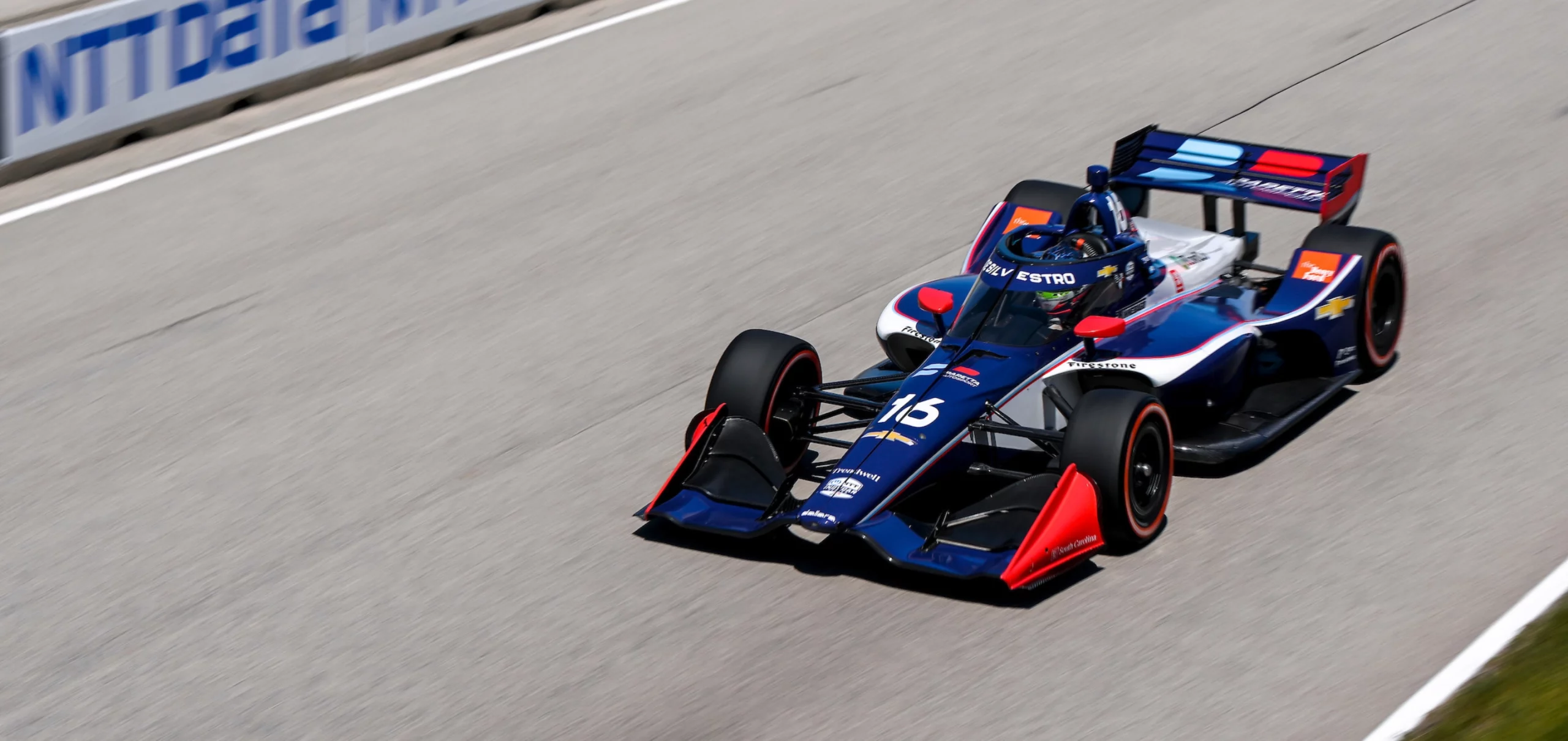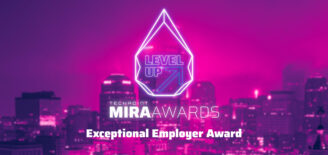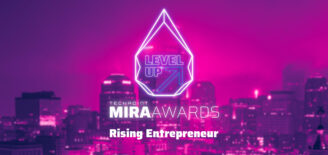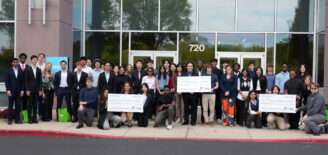Race your way to an exciting tech career in motorsports
Despite being the racing capital of the world (Indianapolis Motor Speedway) and hosting ”The Greatest Spectacle in Racing” (Indianapolis 500) in our own backyard, motorsports isn’t typically an industry that comes to mind when thinking about a potential career in tech in Indiana. However, motorsports is incredibly data-driven, and technology plays a key role in optimizing car performance. To be successful in racing, teams must have a high level of mechanical, electrical and technical understanding and support.
Whether supporting a race team or working for a company connected to the industry, such as software development, tires, hardware, motorsports is ripe with career opportunities in tech, and the demand for tech talent is continuing to increase.
Tech careers available in motorsports
Drivers are commonly the most recognized individual on a racing team, but there are many positions needed to make a racing team successful, especially those with skillsets in science, technology, engineering, and math (STEM).
“Motorsport offers a variety of careers for those in tech, including working for engine, chassis, or tire manufacturers to help develop the next generations of engines, racing chassis, or tires we race on—as well as roles within race teams,” says Pippa Mann, Shift Up Now leader and professional race car driver.
“Many people start working in a junior data acquisition position on the engineering team, then work their way up from being an assistant engineer to a race engineer. There are also development roles within race teams to try and help develop the chassis—the frame of a motor vehicle—to make the car perform better. This can include the conception, design, and implementation of new parts, which helps maximize the performance of the gearbox.”
“The technical positions on a race team can range from mechanical positions like front/rear end mechanics and gearbox specialists to electronics experts, who are in charge of monitoring and optimizing how electronics speak to the timing stand,” says Beth Paretta, CEO and team principal of Paretta Autosport. “Data engineer positions require an understanding of electrical engineering, and these engineers are responsible for ensuring the sensors work properly on cars. Many people don’t realize that making adjustments to the engine is now done with software, which requires a solid understanding of mechanical engineering.”
Race strategists must also have an advanced technical understanding, typically requiring a master’s or PhD-level degree in a STEM subject and the ability to understand programming languages (e.g., Python, MATLAB).
“In addition to tech careers within standard IT business functions such as application and website development, IT support, infrastructure engineering, and cybersecurity, the motorsports industry offers unique positions integrating technology into the on-track product,” says Rebecca Ruselink, chief information officer (CIO) for Penske Entertainment. “Technology plays a key role in defining winning strategies; from analyzing live-streaming data from cars on track to emerging innovation in driverless automation, a career in motorsports provides the opportunity to continue the long-standing tradition of automotive research and development that begins on the racetrack and finds its way into every car on the road.
“Outside of roles on a race team, there are many opportunities to work with technology in the various companies connected to the industry,” says Ruselink. “Some examples include working in software development on the timing and scoring systems that keep an official record of every on-track session or developing new, exciting ways of presenting content to the fans via mobile applications, websites and television broadcasts.”
Tech talent demand increases alongside motorsports expansion
Getting young people and tech talent interested in the sport is more important than ever as the global motorsports industry is expected to expand by over 60 percent in the next four years—despite the hit the industry took in 2020 during the pandemic. As the industry expands, the demand for tech talent in the motorsports space will also continue to increase.
More motorsports tech jobs are becoming available in Indiana as Andretti Global just announced its plan to establish its global motorsports headquarters in Fishers. The investment of $200 million will create up to 500 jobs by the end of 2026 and feature a 575,000-square-foot facility. With a strategic location next to an Indianapolis Metropolitan Airport property on the northside, the facility will be home to a research and development team dedicated to Andretti Technologies.
In addition, Rahal Letterman Lanigan Racing, is currently building a $20 million, 115,000-square-foot headquarters expected to open in the fall of 2022. With the news of these investments, Indiana is solidifying its place as the home to major motorsports players.
Getting involved in motorsports
For some, considering a tech career in motorsports comes naturally, especially if you’ve grown up watching races or been interested in racing from an early age like Mann and Paretta. Others become embedded in the racing community because of relevant expertise, like Ruselink. But many aren’t aware of the tech career opportunities in motorsports and what the industry can offer for budding tech talent in our state.
“What I think people forget when they watch a race like the Indianapolis 500 is for every one driver, there are 30 or more people on the race team needed to get the car on the grid and ready to race,” says Paretta. “It can be hard to see the career opportunities if you are only introduced to a fraction of the team.”
Mann, Paretta and Ruselink are dedicated to getting more people—especially children and young girls—involved in motorsports. Luckily, there are more ways than ever before to get involved at an early age.
Youth in Motorsports Tech
“I recommend NXG Youth Motorsports, a 16-year STEM program that teaches students ages eleven through sixteen science and engineering concepts while also allowing them to learn how to drive and to race go-karts,” says Ruselink. “Rod Reid, the organization’s founder and CEO, has built an incredible program to expose young people to racing, including opportunities to have behind-the-scenes access to drivers, engineers and other professionals in the sport.”
A local opportunity for youth engagement within racing is the Indianapolis Soap Box Derby Program. Children in the program are taught how to build, design and race soap box derby cars. “It’s a fun activity that provides an opportunity to apply STEM concepts to their own creation,” says Ruselink.
Specifically designed for young women with a desire to pursue an interest in STEM, Play Like A Girl is a program designed to connect middle school girls with inspiring women role models and mentors to build their confidence and inspire them to pursue a career in STEM. The program has partnered with INDYCAR to provide girls with information and access to opportunities in motorsports.
Mann recommends “bringing children to the race track or taking them karting to see if it sparks their interest is a great way to get them involved in the sport young.” One of Mann’s first experiences racing was at an indoor karting track.
“Women react to seeing women as examples,” says Paretta. “I created an autosport team of women to help inspire the next generation to get involved, just like I remember seeing the first US woman astronaut when I was young. So many young girls went to space camp after seeing someone like them in that position.”
Like many careers in sports, motorsports can be very demanding and require a lot of time and effort, but it can also introduce you to experiences you can’t get anywhere else.
“Working in motorsports is not a nine to five job,” says Mann. “There will be a lot of long hours, a lot of days, weeks and weekends away from home at race tracks and your life will effectively be dictated by when your work needs you. However, if you have a passion for the sport, it can also be a very rewarding career.”
Paretta agrees. “It is very hard work with very long days. But racing is one of the best jobs in the world! It can bring you to interesting places.”
Another benefit of working in the industry is that many skills are transferable should you choose to leave. “You can be a mechanic on a race team then go work at a dealership. You can leverage the skills you used as a data engineer and take that to a tech company,” says Paretta. “You can work 10 years on a race team, build a skillset and take it somewhere else. Not a lot of other sports offer than opportunity.”
Pippa Mann is a former open-wheel race winner, and seven-time Indianapolis 500 competitor turned sports car coach and co-driver. She is actively seeking sponsorship support to return to the Indianapolis 500 and make her debut in the IMSA Weather Tech Sports Car Series.
Interested in cars and racing from a young age, Beth Paretta leveraged her business acumen to quickly advance her career at multiple automotive companies, including Volkswagon, Aston Martin, and Fiat Chrysler, where she was named the first female Director of SRT and Motorsports. Paretta Autosport made history in 2021 as the first female-owned, female-driven, and female-led crew competed at the Indy 50 0.
Before starting her role at Penske Entertainment in 2016, Rebecca Ruselink held many IT leadership positions in Indianapolis, including Vice President of Information Technology at Interactive Intelligence and Senior Director of Information Technology at Steak n’ Shake, Inc.






































